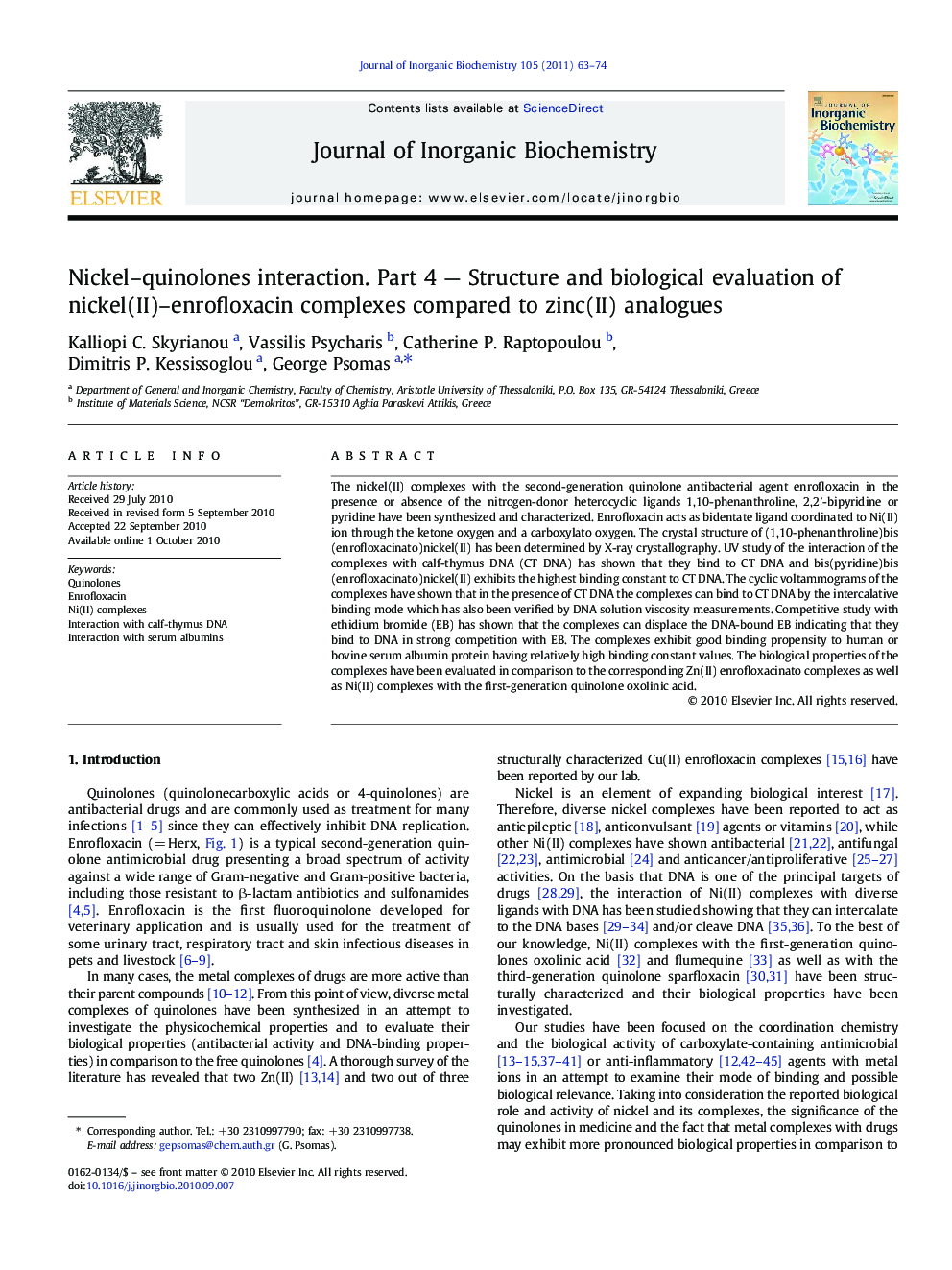| Article ID | Journal | Published Year | Pages | File Type |
|---|---|---|---|---|
| 1316328 | Journal of Inorganic Biochemistry | 2011 | 12 Pages |
The nickel(II) complexes with the second-generation quinolone antibacterial agent enrofloxacin in the presence or absence of the nitrogen-donor heterocyclic ligands 1,10-phenanthroline, 2,2′-bipyridine or pyridine have been synthesized and characterized. Enrofloxacin acts as bidentate ligand coordinated to Ni(II) ion through the ketone oxygen and a carboxylato oxygen. The crystal structure of (1,10-phenanthroline)bis(enrofloxacinato)nickel(II) has been determined by X-ray crystallography. UV study of the interaction of the complexes with calf-thymus DNA (CT DNA) has shown that they bind to CT DNA and bis(pyridine)bis(enrofloxacinato)nickel(II) exhibits the highest binding constant to CT DNA. The cyclic voltammograms of the complexes have shown that in the presence of CT DNA the complexes can bind to CT DNA by the intercalative binding mode which has also been verified by DNA solution viscosity measurements. Competitive study with ethidium bromide (EB) has shown that the complexes can displace the DNA-bound EB indicating that they bind to DNA in strong competition with EB. The complexes exhibit good binding propensity to human or bovine serum albumin protein having relatively high binding constant values. The biological properties of the complexes have been evaluated in comparison to the corresponding Zn(II) enrofloxacinato complexes as well as Ni(II) complexes with the first-generation quinolone oxolinic acid.
Graphical AbstractThe nickel(II) complexes with the quinolone antibacterial agent enrofloxacin have been synthesized in the presence or absence of diverse N-donor heterocyclic ligands and their ability to bind to DNA and to human or bovine serum albumin proteins has been evaluated in comparison to Znenrofloxacinato and Ni-oxolinato complexes of similar formula.Figure optionsDownload full-size imageDownload as PowerPoint slide
